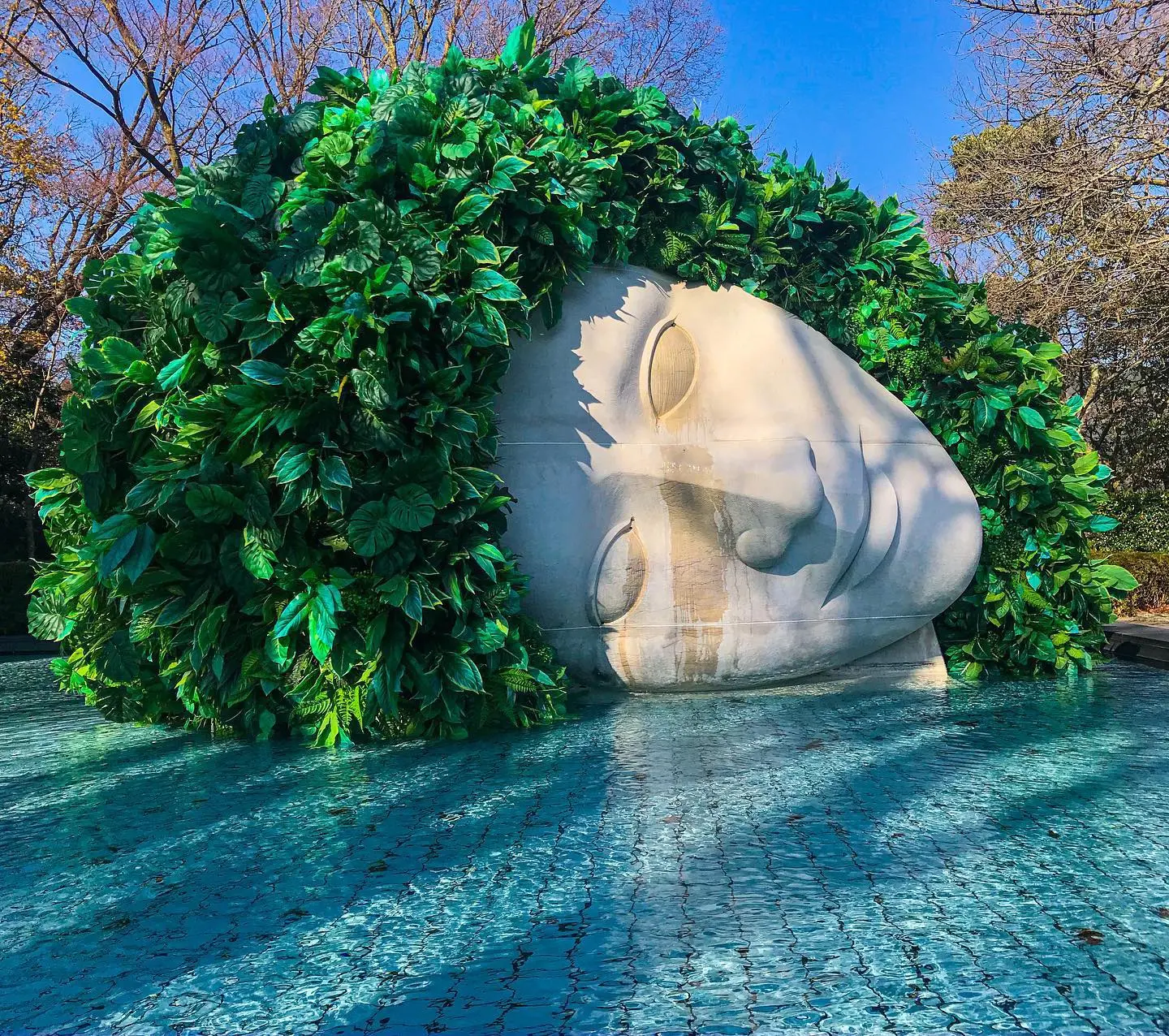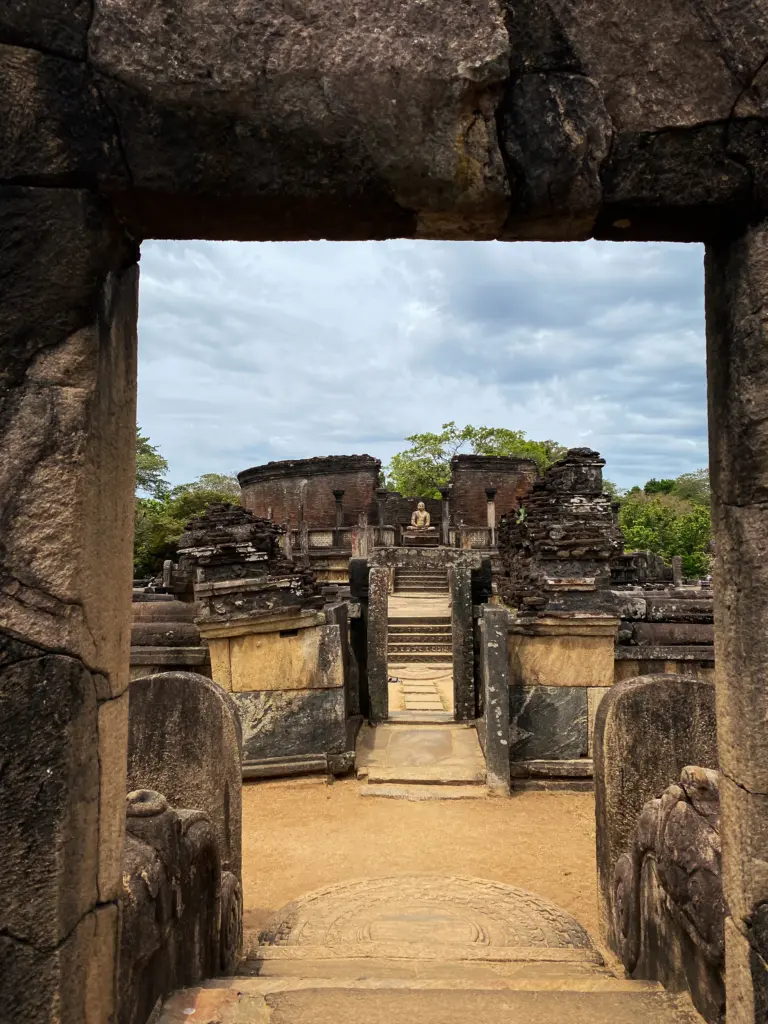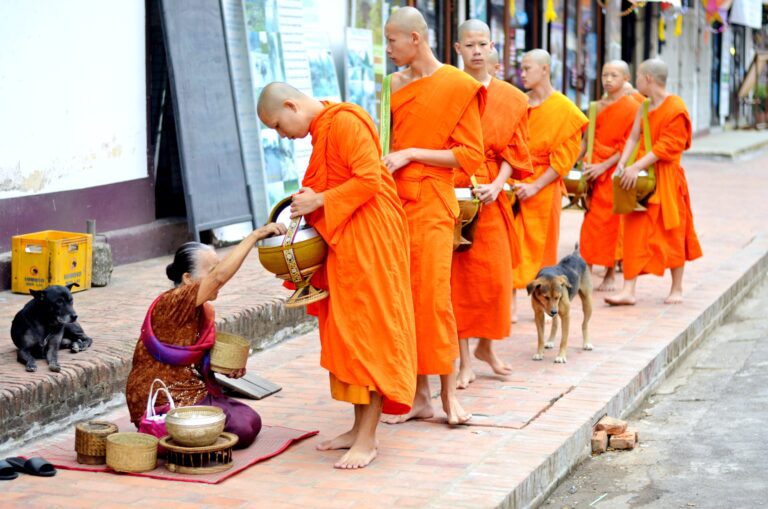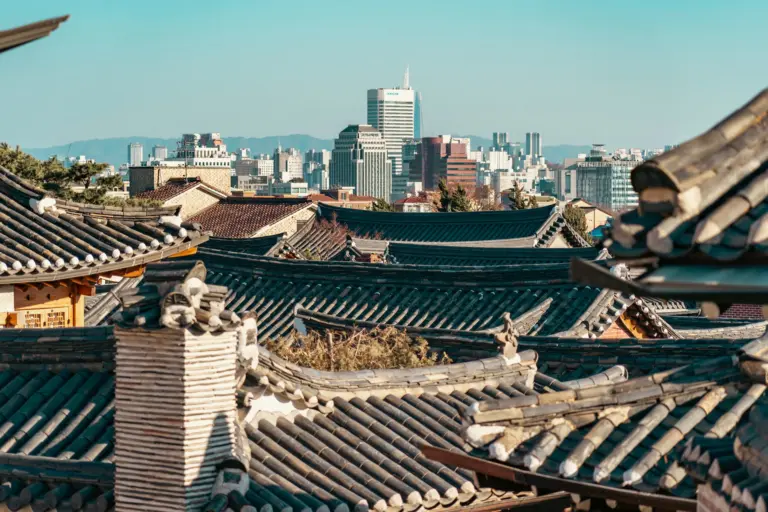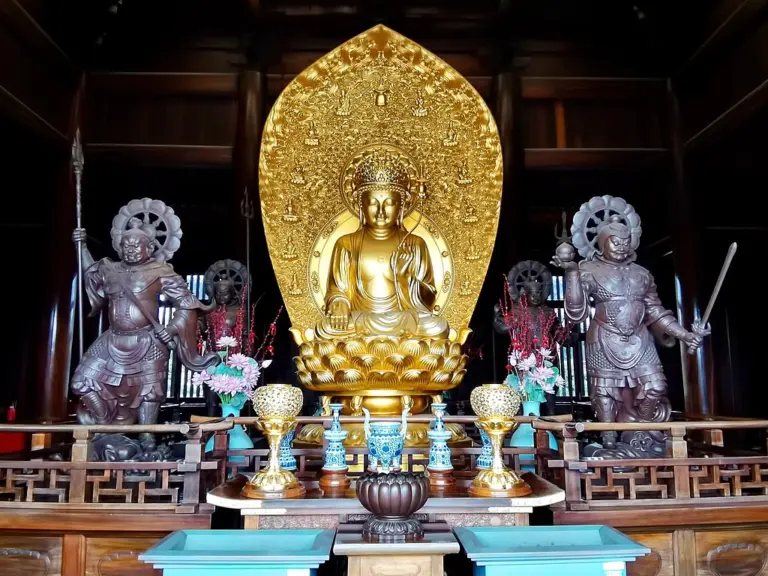In the mosaic of Japanese mythology, the Seven Lucky Gods, or Shichifukujin, embodyies the eclectic fusion of various religious traditions that has come to shape Japan’s unique spiritual landscape.
These deities, each with their distinct origins, collectively symbolize the many facets of fortune, prosperity, and well-being deeply revered in Japanese culture. Fun fact: The Matryoshka Doll from Russian culture is said to have been influenced by the Shichifukujin!
The Seven Lucky Gods are so integral to the cultural consciousness of Japan, you can find their influence almost everywhere in the country, whether it’s up on the mountains, temples, or shops. Indeed, as symbols of wealth, wisdom, longevity, and happiness, they resonate with a wide array of human aspirations.
Let’s take a journey that reveals not only the stories of these revered figures but also the syncretic nature of religious belief in Japan, illustrating how these deities have become enduring symbols of auspiciousness in the Japanese psyche.
Table of Contents
Toggle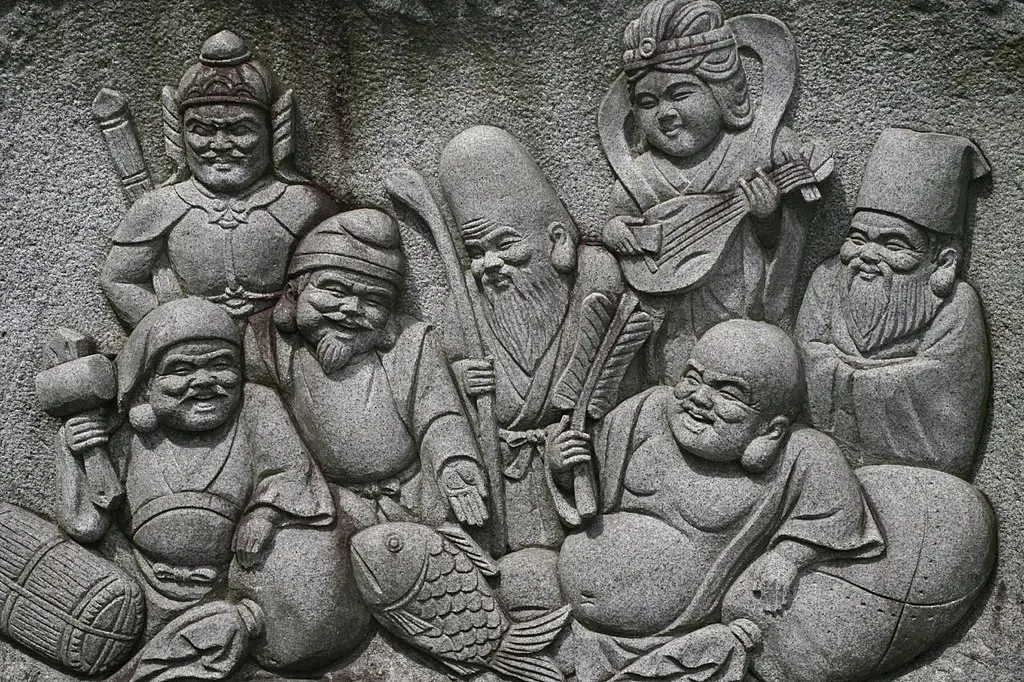
Origin of the Seven Lucky Gods
The Seven Lucky Gods’ origins draw from a rich fusion of Buddhism, Shintoism, Hinduism, and Taoism.
The significant Buddhist influence in the group comes from the adoption of Indian deities into Japanese culture through Buddhism. As Buddhism made its way into Japan, it brought with it a variety of gods and goddesses, who were later absorbed into the Japanese religious network. These deities were adapted to align with local beliefs and customs, gaining unique characteristics within Japanese folklore.
Shintoism, the indigenous religion of Japan, played a crucial role in this assimilation. The Shinto belief in kami, or spirits inherent in nature, allowed for a seamless integration of these foreign deities into the Japanese spiritual framework. This integration was often done in a way that complemented existing beliefs, with the foreign gods taking on roles and attributes that resonated with Shinto values.
The inclusion of deities with roots in Hinduism and Taoism further exemplifies this syncretism. Adapted through the lens of Japanese Buddhism, these gods were reinterpreted and given new significance within the Japanese context. This blending of Hindu and Taoist elements with Buddhist and Shinto beliefs created a unique religious environment where multiple traditions coexisted harmoniously.
The Seven Lucky Gods are not just a collection of individual deities but represent the collective religious consciousness of Japan.
Who are the Seven Lucky Gods?
Each god in this revered ensemble brings a unique set of blessings and has a distinct background. Sometimes, Kisshoten is included as one of the seven, replacing one of the traditional figures (usually Fukurokuju), therefore we will be actually covering eight lucky gods as a bonus! Here’s an in-depth look at each of these deities:

1. Ebisu
Ebisu is special being the only one of the seven to originate purely from Japan without any Buddhist or Taoist influence. Revered as the god of fishermen and luck, Ebisu’s origins are intricately tied with Hiruko, the first child of the primordial Shinto deities Izanagi and Izanami.
Born without bones (or, in some stories, without arms and legs) due to his mother’s transgression during their marriage ritual, Hiruko faced immense hardships. As he could not stand, he was cast into the sea in a boat of reeds before his third birthday. The legend narrates how Hiruko eventually washed ashore—possibly in ancient Hokkaido—and was cared for by the Ainu (the indigenous people of Japan), Ebisu Saburo. This narrative marks his transformation from Hiruko to Ebisu.
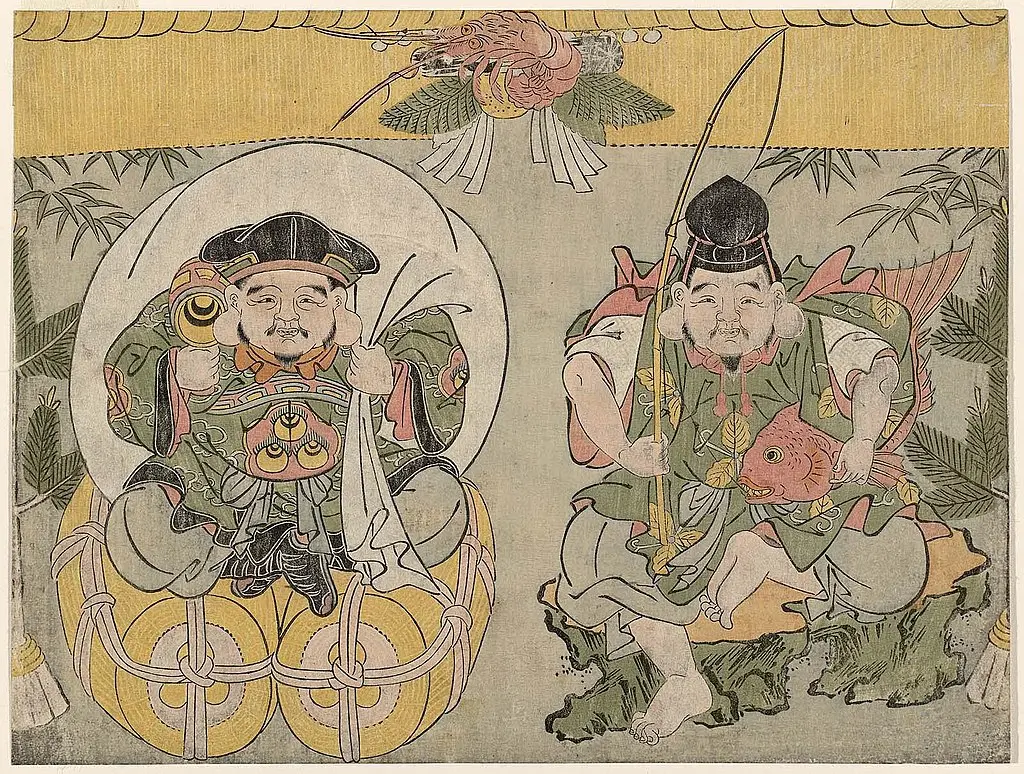
It is believed that Ebisu first arose as a deity among fishermen, with his origin as Hiruko being a later conceptualization as his worship spread to merchants and farmers. Ebisu’s popularity, particularly among fishermen and later farmers and merchants, led to his veneration in almost every Japanese home, alongside Daikokuten, another one of the lucky gods. I often find that they are often worshipped together, for instance at Tokyo’s Atago Shrine.
Ebisu is often depicted as a cheerful, slightly crippled, and deaf deity, earning him the title of “The Laughing God”. He is commonly shown wearing a tall hat (Kazaori Eboshi), holding a fishing rod, and a large red sea bream.
Fishermen’s tales about Ebisu emphasize his role in keeping the ocean safe and clean, pushing debris to the shore. The belief is that it takes Ebisu, with his physical limitations, years to bring objects like seeds to the shore. It’s also said that Ebisu becomes enraged when the ocean is polluted!
And if you’ve ever been around Shibuya, you’d most likely have come across the Ebisu district, which is named after the god himself. You can find a statue of him right outside the station!

2. Daikokuten
Daikokuten, the god of fortune and wealth, epitomizes the intriguing syncretism of religious beliefs, drawing from Hindu, Buddhist, and Shinto traditions. His evolution from the Buddhist version of the Hindu deity Shiva merged with the native Shinto god Okuninushi.
Mahakala, an epithet of Shiva, signifying “Great Black One,” represents Shiva’s role as the ultimate destroyer of all things. This fearsome aspect of Shiva was adopted and transformed by Buddhism, where Mahakala became a protector of the Buddhist dharma and (still) a terrifying deity, roaming the forests with hordes of ghouls and demons.
The depiction of Mahakala in Chinese Buddhist texts evolved over time. His cult flourished, particularly influenced by Tibetan Buddhism.
In Japanese culture, Mahakala was transcribed and translated into Daikokuten, marking a significant shift in his characterization. From a fearsome god, Daikokuten transformed into a stout jovial figure. His darker traits receded, giving way to his positive attributes as a purveyor of wealth and fertility. And what a transformation that was!
The photo I took of Daikokuten above was from when I was doing a hike in Mt. Ogami, even from such a far remote corner it’s quite common to find their presence.

Daikokuten is often depicting with a sack, a golden mallet called “uchide no kozuchi,” and two large bales of rice. These symbols not only represent wealth and prosperity but also fertility, as seen in his sometimes suggestive portrayals.
Mice and rats, associated with Vaisravana (Bishamonten in Japanese), became part of Daikokuten’s iconography, linking him further with wealth and the zodiac sign of the Rat.
In Vajrayana Buddhism, Daikokuten is not just a symbol of material prosperity but represents profound spiritual concepts. One key interpretation involves the dual nature of ignorance and enlightenment. The name Daikokuten itself can be seen as a play on words, with “Daikoku” interpreted as “great darkness,” symbolizing ignorance.
This darkness, however, is not just a negative aspect but is also seen as a necessary part of the path to enlightenment. The character for “darkness” (黒, koku) when combined with “great” (大,dai) in Daikokuten’s name, suggests the idea of transcending ignorance to achieve a state of great enlightenment. This interpretation aligns with the Buddhist belief in the nonduality of Samsara and Nirvana, where enlightenment emerges from the heart of ignorance.
Daikokuten’s association with the sacred syllable bhrum links him with the Cosmic Buddha Vairocana, representing the pinnacle of spiritual awakening in Mahayana Buddhism. This connection elevates Daikokuten from a worldly deity of fortune to a representation of ultimate reality and cosmic truth.
The concept of Daikokuten being a “higher” deity, with his benign form as one of his many guises, suggests the multifarious nature of divine manifestations in esoteric Buddhism. While his popular form represents material wealth and good fortune, his higher form symbolizes the transformation of ignorance into wisdom, a key tenet in Buddhist teachings.
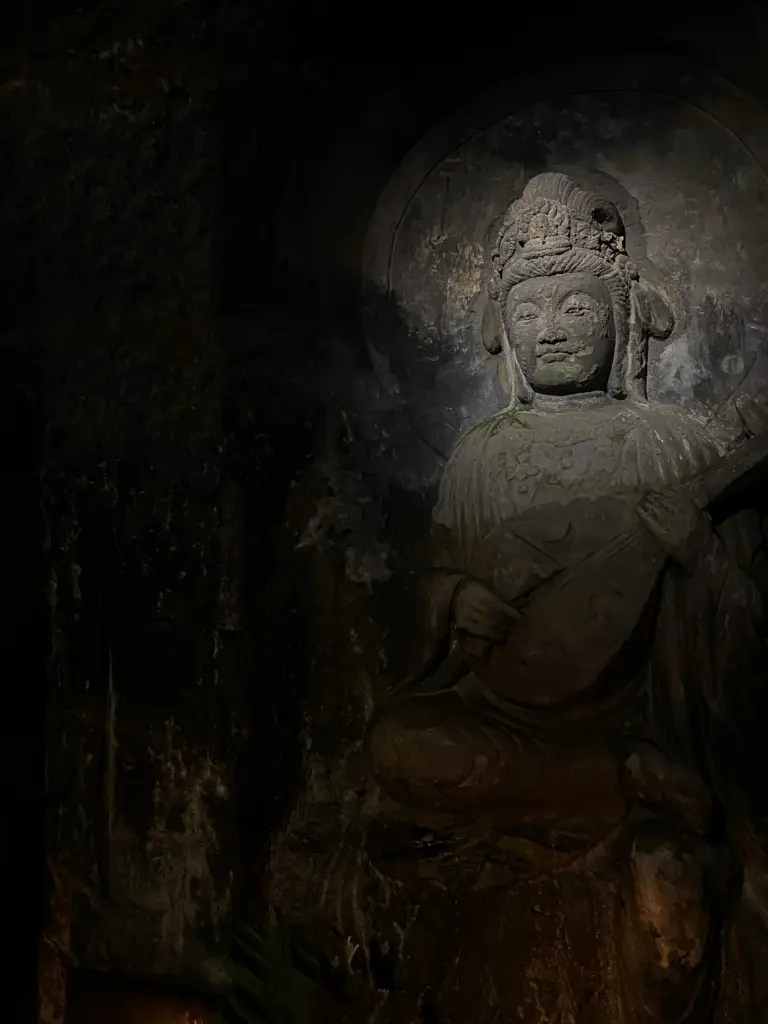
3. Benzaiten
Benzaiten, a goddess of eloquence, music, and the arts, represents a beautiful blend of Hindu and Buddhist traditions. Her journey from Saraswati to the revered Benzaiten is another story of religious syncretism.
Originating from the Hindu goddess Saraswati, Benzaiten was absorbed into Japanese culture through Buddhism. Saraswati, known as the goddess of learning, music, and arts, transformed into Benzaiten, retaining many of these attributes. In Japan, she is revered as the patroness of everything that flows – water, words, knowledge, music, and by extension, wealth.
Benzaiten arrived in Japan between the sixth and eighth centuries, primarily through the Classical Chinese translations of the Golden Light Sutra, which featured a section devoted to her. In this text, she appears before the Buddha’s assembly, promising to protect those who have faith in the sutra and to increase their intelligence. She also teaches various mantras for healing and escaping misfortune.
The photo above was one I took inside a cave at Hasedera Temple in Kamakura, one of Japan’s spiritual hubs.

In Japan, Benzaiten retained many of Saraswati’s attributes, but she also developed unique aspects. She became associated with dragons (check out my article on the island of Enoshima for an interesting backstory on this), snakes, and took on roles of wealth, fortune, and protection from disease and danger.
Benzaiten is often depicted with a biwa, akin to Saraswati with her veena, symbolizing her patronage of music. However, she can also be seen wielding a sword and a wish-granting jewel, similar to the eight-armed form described in the Golden Light Sutra, reminiscent of Durga‘s iconography.
In Shinto, Benzaiten was adopted as Ichikishima-hime-no-mikoto, one of the three daughters of the sun goddess Amaterasu.
Benzaiten’s esoteric significance in Buddhism is sometimes viewed as a manifestation of transcendent wisdom and the embodiment of the concept of prajna or perfect wisdom. This aligns with her origin as Saraswati as the goddess of knowledge.

4. Bishamonten
Bishamonten, also known as Bishamon or Tamonten, embodies the virtues of authority, dignity, and protection. His roots are deeply embedded in Buddhist lore, originating from the Indian deity Vaisravana, the guardian of the north in Buddhist cosmology.
In Hindu mythology, Vaisravana is known as Kubera, the god of wealth. However, in his transition into Buddhist and subsequently Japanese culture, Bishamonten’s role evolved to focus more on protection, becoming a symbol of strength and a god of warfare. This shift aligns him with the Buddhist concept of Dharmapala, a defender of the faith.
Bishamonten’s iconography often portrays him in warrior attire, equipped with armor and weapons, signifying his status as a protector deity. He is frequently depicted holding a spear and a pagoda, the latter representing the divine treasure house, which the content he guards and gives away. Legends often depict him as a deity who can reveal hidden treasures to those who are righteous and deserving.
In Japanese culture, Bishamonten is revered not only as a god of war but also as a deity who wards off evil and brings fortune, especially in the form of material wealth.
His statues are commonly found in the entrace of Buddhist temples such as the one in Seisouji Temple, which I highly recommend checking out if you’re in the Toranomon area! He usually stands guard with the other Four Heavenly Kings of the Cardinal Directions (Shitennou), Bishamonten being the one that guards the north.
The photo used above is from Nara‘s Todaiji Temple.
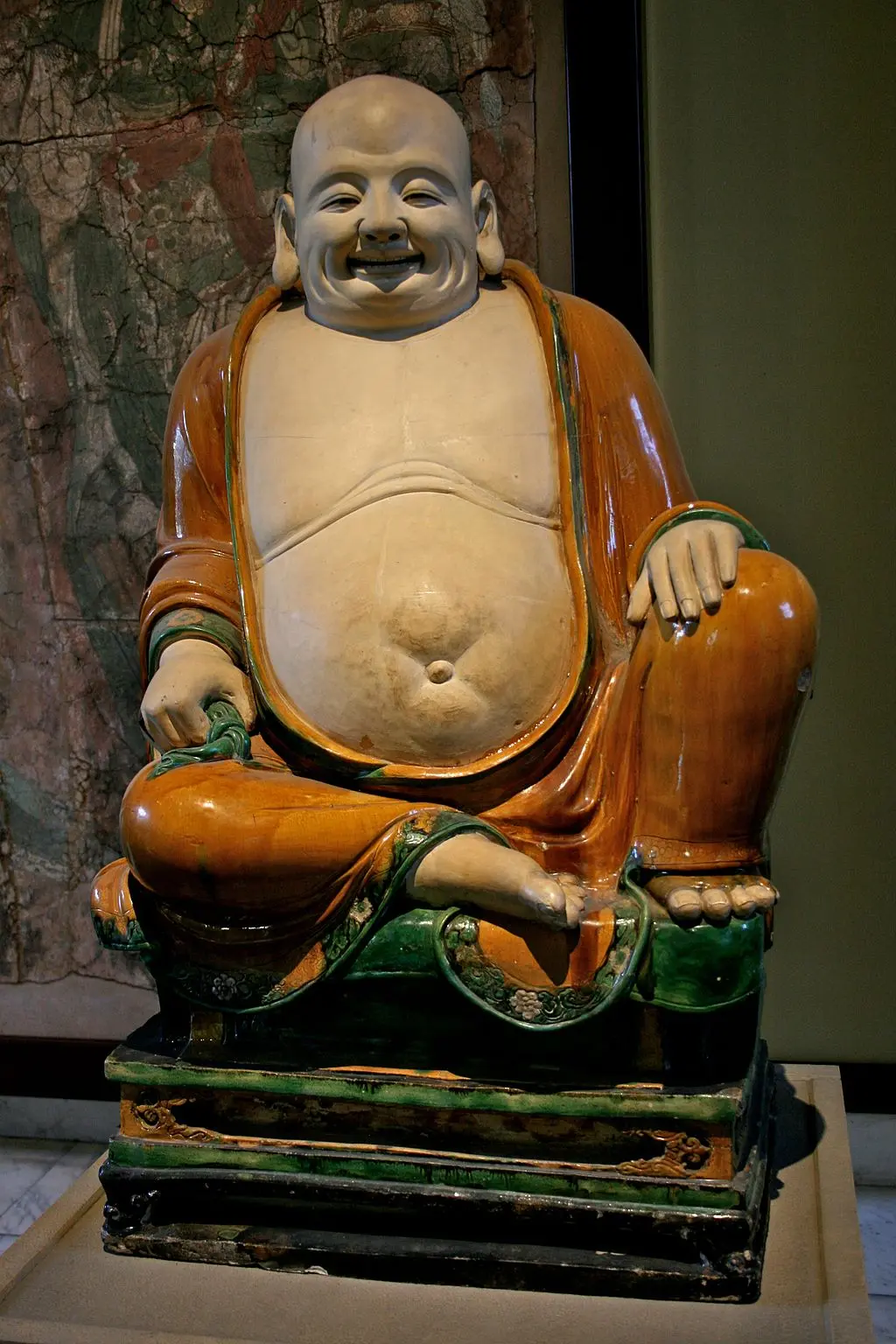
5. Hotei
Hotei is probably one of the most recognizable one amongst the seven. He is a beloved figure both in and outside Japan.
Often known as the Fat Buddha or the Laughing Buddha, Hotei is a figure deeply ingrained in East Asian Buddhist tradition, particularly in Zen Buddhism.
Originally known as Budai, a nickname meaning “cloth sack” in Chinese, Hotei was a wandering monk named Qici, who lived around the 10th century CE in the Wuyue kingdom. His moniker derives from the bag he is typically depicted carrying, symbolizing his Buddhist virtues of contentment and generosity. Budai’s jolly nature, humorous personality, and love of food and drink are distinguishing features that contribute to his image as the “Laughing Buddha”.

Budai’s association with Maitreya, the Buddha of the Future, is a crucial aspect of his identity in Zen Buddhism. According to a death note believed to be written by Budai himself, he claimed to be an incarnation of Maitreya.
Maitreya is prophesied in Buddhist texts to be a future Buddha who will appear on Earth, achieve complete enlightenment, and teach the pure dharma. Budai’s identification with Maitreya implies that he embodies the qualities of this future Buddha, bringing joy and teaching lessons of contentment and kindness in simple ways.
Hotei/Budai is traditionally depicted as a fat, bald monk wearing a simple robe, a visual representation of abundance. He is known for entertaining children and is often shown patting his large belly happily. He is known to be a god of contentment and happiness in Chinese and Japanese cultures.
Hotei’s mystical abilities, as told in legends, include predicting people’s fortunes and weather patterns. His ability to sleep peacefully in the open, unaffected by harsh weather, is something we can all use!

6. Jurojin
Jurojin is revered as the god of longevity. His roots are deeply entrenched in Taoist beliefs, originating from the Chinese Taoist deity known as the Old Man of the South Pole, a personification of the Southern Polar Star.
Jurojin is commonly depicted as an old man with a long white beard. His physical stature is traditionally described as being less than 3 shaku, approximately 90 cm (35 in). He is often seen carrying a staff and a fan.
He is also accompanied by a deer, who is said to be over 2,000 years old!
Jurojin’s identity is frequently intertwined with that of Fukurokuju, another deity from the Seven Lucky Gods who also symbolizes longevity and wisdom. In some accounts, they are said to inhabit the same body or are otherwise closely connected, leading to confusion between the two. Which leads us to the next god.

7. Fukurokuju
Fukurokuju, renowned for symbolizing happiness, wealth, and longevity, presents a syncretic blend of Taoist and Buddhist influences.
There is a theory that Fukurokuju represents an assimilation of the Chinese Three Star Gods (Fu Lu Shou) in one deity, particularly resembling Shou. Which is why Fukurokuju has come to be associated with being the god of longevity and wisdom.
His origins are thought to trace back to a mythical Chinese Taoist hermit sage from the Northern Song period, known for performing miracles and embodying the celestial powers of the south polar star, Canopus.
Fukurokuju’s depiction is that of a bald figure with long whiskers and an elongated forehead. The book he carries, tied to his staff, is said to contain either the lifespan of every person on earth!
The accompanying crane and turtle in his imagery are powerful symbols of longevity in both Chinese and Japanese cultures.
Fukurokuju is the only one among the Seven Lucky Gods who possesses the unique ability to resurrect the dead. This attribute links him to broader themes of rebirth and the cyclical nature of life.
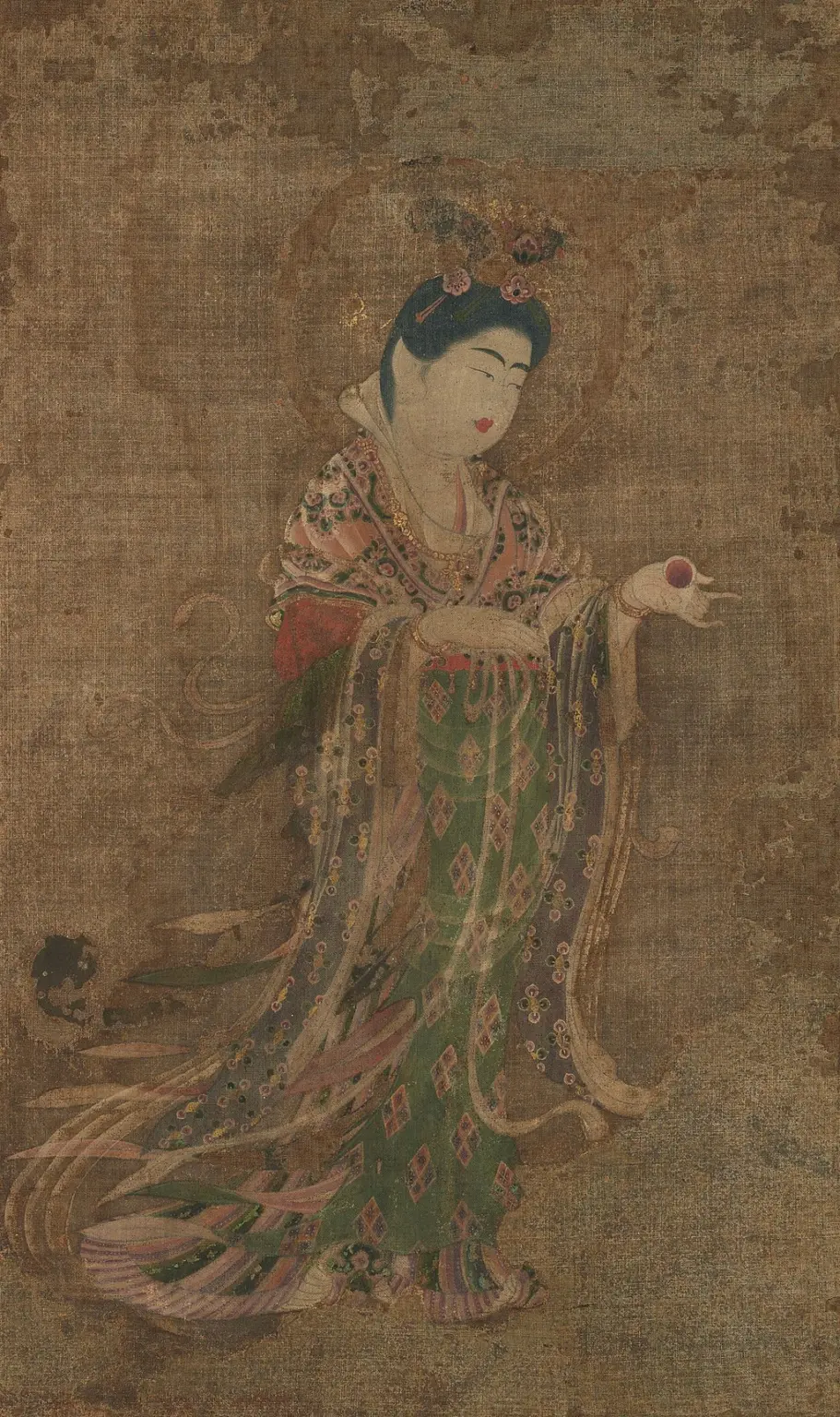
8. Kisshoten
I know, I know, Seven Lucky Gods yet we have an eigth.
In various traditions, Kisshoten is sometimes included among the Seven Lucky Gods, replacing either Jurojin or Fukurokuju. For instance, in the 1783 edition of the Butsuzozui compendium, Kisshoten is listed as one of the Seven Lucky Gods.
Kisshoten, also known as Kichijoten or Kisshoutennyo, is adapted from the Hindu goddess Lakshmi through Buddhist influence, she is the goddess of happiness, fertility, and beauty, being one of the only other female deities with Benzaiten.
Kisshoten is often portrayed as a beautiful, elegant woman with a gentle and benevolent demeanor. She is typically adorned in fine clothes and jewelry. Kisshoten’s iconography is particularly notable for the Nyoihoju gem that she holds, a symbol often associated with the granting of wishes and the fulfillment of desires. This gem, along with her representation through the symbol of the kagome (hexagram), underscores her role as a giver of prosperity and good fortune.
An interesting aspect of Kisshoten’s incorporation into the Seven Lucky Gods is the representation of the Hindu Tridevi (Trinity of Goddesses) within this group. When Kisshoten is included and Daikoku is regarded in a feminine form, the trio of Hindu Tridevi goddesses is completed within the Fukujin. Daikoku, in this interpretation, represents Parvati (Remember that he is derived from Shiva? Parvati is Shiva’s consort), while Benzaiten represents Saraswati.
The Tridevi (Lakshmi, Parvati, and Sarasvati) are the consorts of the Hindu Trimurti respectively (Vishnu, Shiva, and Brahma)



